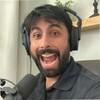Check out what is new in Pig Industry
Find the best technical articles, forums, and videos on Pig Industry at Engormix. Enter now and interact with the world's largest agricultural social network.
1. Introduction Creatinine (2-amino-1-methyl-2-imidazoline-4-one) is the final metabolism product of creatine in mammals [1], which is excreted exclusively by the kidneys via glomerular filtration and, to a lesser extent, by tubular secretion [2]. Under physiological conditions, its excretion throughout the day is relatively constant, the amount of creatinine produced is proportional to the muscle mass of the individuals [3]. In contrast, urine production depends on the...
Comments : 0
Recommendations: 0
1. Introduction The gastrointestinal (GI) tract is home to the gut microbiome, trillions of colonizing and transient microbes. These microbes support critical health functions including digestion, immune development, metabolism, and resistance to pathogens. While many studies have focused on the bacterial component of the microbiome, the bacteriome, recent studies have demonstrated the ability of fungal microbiome members, the mycobiome, to alter gut microbial community...
Comments : 0
Recommendations: 2
1. Introduction The global demand and industrial production of pork and pork products are increasing. According to the Food and Agriculture Organization of the United Nations (FAO) statistics, worldwide swine production has increased steadily from 1961 to 2007, with Asia the continent with the highest production with around 50% of the total worldwide production. Between 2007 and 2017, production increased significantly in Asia and remained as the highest swine producers (almost...
Comments : 0
Recommendations: 0
Erysipelas is a contagious infectious disease of pigs caused by the bacterium Erisipelothrix rhusiopathiae. The Swine Erysipelas is an actual disease, as reported Schwarts (AASV 2002) with the increase of cases at the University of Iowa, with economic impact in the herd losses may include loss of death (1%) - $ 2.50dls/hembra; treatment cost $ 1/hembra; abortion (4%) - $ 5dls/hembra for a total of $ 10dls/hembra. Also in the growth stage - complete the death loss (3%) - $ 2.50dls; treatment...
Comments : 0
Recommendations: 1
1- INTRODUCTION In 2014, it was first reported that pigs could become infected with porcine epidemic diarrhoea virus (PEDV) following consumption of contaminated feed via natural feeding behaviour (Dee et al., 2014). Since that time, similar observations have been reported for Seneca virus A (SVA), porcine reproductive and respiratory syndrome virus (PRRSV) and African swine fever virus (ASFV) (Dee et al., 2020a; Niederwerder et al., 2019,). These and other studies have...
Comments : 0
Recommendations: 0
INTRODUCTION Besides genetic improvement, there are several factors that influence performance and carcass traits of pigs and among them is the amino acid requirement. To obtain high muscle protein deposition rate in pigs genetically improved it is necessary to determine the standardized ileal digestible lysine (SIDL) requirement to ensure the diets allow expression of their maximum genetic potential (YI et al., 2006). The amino acid lysine has been of greatest interest...
Comments : 0
Recommendations: 0
.mp4&w=3840&q=75)
Dr. Hyatt Frobose (Jyga Technologies) comments on renovations, regulations and farrowing crates, in this Swine It interview with host Laura Greiner....
Comments : 0
Recommendations: 0
.mp4&w=3840&q=75)
Dr. Cesar Corzo (University of Minnesota) explains how the industry reacts to different challenges in this Swine It interview with host Márcio Gonçalves....
Comments : 0
Recommendations: 0
.mp4&w=3840&q=75)
Dr. Blake Wilson (Adisseo) commented on the quality of ingredients and the value of networking in this Swine It interview with host Laura Greiner. ...
Comments : 0
Recommendations: 0
.mp4&w=3840&q=75)
Dr. John McGlone (Texas Tech) discusses the different conditions that pig farms face depending on their region, in this Swine It interview with host Márcio Gonçalves....
Comments : 0
Recommendations: 1
.mp4&w=3840&q=75)
Dr. Cassie Jones (Kansas State University) discusses feed control and virus prevention, in this Swine It interview with host Márcio Gonçalves....
Comments : 2
Recommendations: 1
.mp4&w=3840&q=75)
Dr. Larry Rueff (Swine Veterinary Services) explains the percentage of treatment in this Swine It interview with host Laura Greiner....
Comments : 0
Recommendations: 0
.mp4&w=3840&q=75)
Dr. Markus Wiltafsky-Martin, Responsible for Service Commercialization at Evonik Animal Nutrition, underscores why AMINODat® 6.0, is the most comprehensive animal nutrition database in the world that comprises nutritional data of more than 18,000 feed ingredient samples from all over the world and over 900,000 analytical results. ...
Comments : 18
Recommendations: 17
.mp4&w=3840&q=75)
Dr. Rommel Sulabo (University of the Philippines Los Baños) comments on the characteristics of this fiber source in a Swine It interview with host Márcio Gonçalves....
Comments : 1
Recommendations: 0
.mp4&w=3840&q=75)
Dr. Robert Thaler (South Dakota State University) expressed his concerns about the progress and priorities regarding innovation, in this Swine It interview with host Márcio Gonçalves....
Comments : 0
Recommendations: 0
.mp4&w=3840&q=75)
AMINONIR® Portable enables the reliable determination of energy, nutrients in feed raw materials and feed, as well as amino acids in feed raw materials, on-site and independent of a laboratory. The hand-held device connects with the user’s tablet or cell phone. It only requires mobile signal reception and a handful of feed or raw material without further sample preparation to determine their quality at almost any location within minutes....
Comments : 9
Recommendations: 8
.mp4&w=3840&q=75)
Dr. Brooke Smith (University of Illinois) discusses the conditions in pig farms and possible performance in this Swine It interview with host Márcio Gonçalves....
Comments : 0
Recommendations: 0
.mp4&w=3840&q=75)
Márcio Gonçalves shares some insights about energy sources for swine diets, in this Swine It video....
Comments : 1
Recommendations: 2
1. Introduction Monogastric animal production, in particular the poultry production sector, is growing continuously, driven mostly by the demand for meat and eggs. However, this rapidly growing industry and the increasing demand for poultry feeds have led to a considerable increase in feedstuff prices. The gap between demand and supply of balanced feed is expected to increase, and consequently increase the cost of production....
Comments : 1
Recommendations: 0
1. Introduction Pain is a sensory and emotional experience that has significant effects on animal welfare, leading to a negative production impact [1]. The measurement of pain in animals is very complex, and it continues to be a critical issue in veterinary care and biomedical research [2]. Almost two hundred years ago, Darwin had already described the non-human animals’ capacity for expressing emotions such as pain through facial expression [3]. In the last...
Comments : 0
Recommendations: 0




























